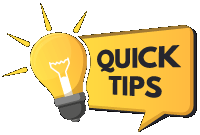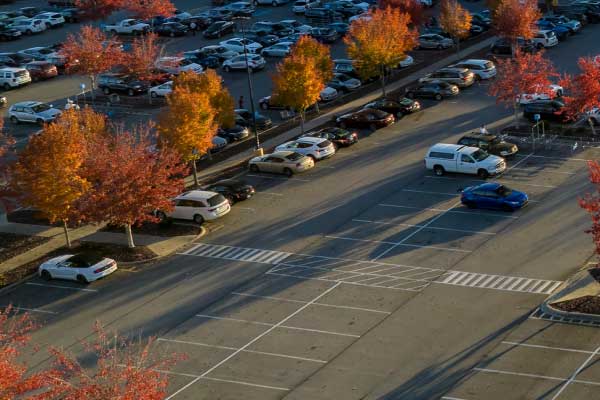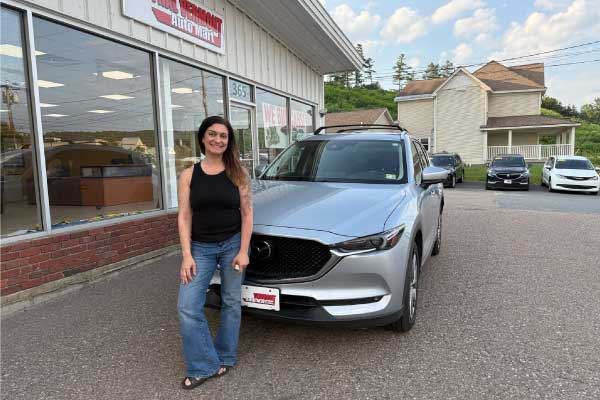When Is the Best Time to Buy, Sell, or Trade Your Car? | Used Cars for Sale in Vermont
⏰ When Is the Best Time to Buy, Sell, or Trade Your Car?
Timing isn't everything when it comes to buying or selling a car-but it comes close. Prices, trade-in values, and even inventory levels shift throughout the year, creating windows of opportunity for savvy shoppers and sellers.
If you've been asking yourself, "When is the best time to buy a vehicle?" or if you're browsing used cars for sale in Vermont, the answer may surprise you. The months of October through December and the slower winter months of January and February often bring the best chances to save money, maximize trade-in value, and secure the right vehicle before spring demand pushes prices upward.
Let's explore why these seasons matter, what makes Vermont's used car market unique, and why acting sooner rather than later could put you in the driver's seat.
🍁 Why October to December Is a Smart Time for Used Car Buyers
- Dealership Year-End Goals: Most dealerships are eager to wrap up the year with strong sales numbers. That means extra motivation to move inventory, especially cars that have been on the lot for a while.
- Less Competition: During the holiday season, many people are focused on gifts, travel, and family gatherings-not car shopping. That creates opportunities for motivated buyers who want more room to negotiate.
- New Car Promotions Affect Used Markets: As manufacturers push new car deals in December, many buyers trade in their older vehicles. That boosts used car supply, which can create opportunities for shoppers looking for affordable, late-model cars. Wholesale used car values often stagnate or decline in December, as many dealers have employees out and the entire wholesale market slows down for a few weeks as buyers take time off for Christmas and New's year celebrations.

In Vermont, winter-ready vehicles like SUVs and trucks may move quickly, but sedans and hybrids often carry year-end discounts that make them especially attractive.

💰 Why Late Fall Is a Great Time to Sell or Trade a Car
If you're considering selling your vehicle outright or trading it in toward something newer, October-November and January are a smart time:
Dealerships Stock Up: Dealers want fresh trade-ins to prepare for the busy spring market. They'll often pay more for good-condition cars before inventories tighten.
Tax Refund Season Ahead: Dealers anticipate more buyers in spring with extra cash in hand, so they smart dealerships start buying aggressively in fall and winter, knowing they can keep their service shop busy reconditioning vehicles at a time when service departments tend to slow down, ensuring they have vehicles ready for when tax refunds start to roll in.
That could mean more money in your pocket when you sell or trade your car before during this time frame. Interested? Find out what your car is worth by answering just a few easy questions.
❄️ January-February: A Buyer's Market Before the Spring Rush
Many people assume that January and February are "dead months" in the auto market, with cold weather and constant snowstorms. That's exactly why they're one of the best times to shop:
- Slower Traffic, Better Deals: Cold weather and post-holiday budgets keep buyers at home, leaving dealerships eager to make deals with those who do shop.
- Negotiation Leverage: With fewer customers competing for the same vehicles, you have more bargaining power.
- Beat the Spring Squeeze: Buying before March ensures you get more choices, a better selection and pricing before demand pushes prices up and choices down.
🚀 Why Prices Often Rise in March and April
Come springtime, the game changes:
- Tax Refund Surge: As people cash their refunds, dealerships see an influx of buyers.
- Seasonal Needs: Families prepare for summer vacations, graduates need vehicles, cars took a real beating during the winter and new drivers hit the roads.
- Inventory Tightening: Sales outpace fresh trade-ins, leaving fewer choices and higher prices.
Waiting until spring can mean paying more for the same car that was on the lot in January or February. Sometimes significantly higher for convertibles or vehicles in high seasonal demand.
🚙 Seasonal and Market Factors to Consider
Along with the factors already mentioned, other aspects you might want to consider in your decision-making process include:
- Vehicle Type: In Vermont, AWD SUVs and trucks carry premiums in winter, while sporty convertibles tend to be priced more attractively.
- Economic Conditions: With new car prices now averaging over $48,000 nationally and tariffs driving costs even higher as older pre-tariff models sell out, more buyers are likely to turn to the used car market, making timing more crucial than ever.
🗻 Vermont’s Local Market Reality
The used car market in Vermont doesn't mirror big-city trends. With fewer dealerships and smaller populations, inventory levels can be limited. When you see the right car, waiting too long could mean missing out.
Example: In Barre and Montpelier, a high-quality used SUV may only have a few comparable options in the Central Vermont area. If you wait until spring, not only might prices rise, but availability may also shrink or disappear for some hard-to-find models.
This makes it especially important for anyone searching used cars for sale in Barre-Montpelier, Vermont to keep an eye on current inventory and act before the seasonal rush.

⚠️ Don't Wait for the Rush
Buying, selling, or trading your car is about making smart moves at the right time. Armed with a little knowledge you can score a great deal by timing the market.
- October-December: Great for both buyers and sellers thanks to year-end sales goals and used car dealers looking to keep their shop busy during the slower months for service, generally right after the winter tire rush subsides.
- January-February: A golden window for buyers to negotiate great deals before demand spikes.
- March-April: Expect rising prices and tighter inventories.
If you're looking for used cars for sale in Vermont or considering trading in your current ride, don't wait until spring when prices rise. Visit our dealership today and take advantage of the seasonal opportunities available right now.
 |
Search our inventory. Choose your next vehicle and schedule your test drive online.
❓ Vermont Car Buying & Selling FAQs
Selling your car for cash to a dealership is usually much faster and easier than selling it privately. You avoid the hassle of advertising, meeting strangers, or negotiating with multiple buyers. Many Vermont dealerships will appraise your car on the spot and make you an immediate cash offer. This makes it a safe and convenient option, especially if you want to put the money toward another purchase. Want to get an offer, click HERE to get an online offer for your vehicle.
Yes, there can be. If you purchase a qualifying used vehicle for business purposes before December 31, you may be eligible for Section 179 tax deductions. This allows businesses to deduct part or all of the purchase price of vehicles (new or used) used for work, up to certain limits set by the IRS. Talk with your tax professional to see if the used car, truck, or SUV you’re considering qualifies. Acting before year-end ensures you can claim the deduction on this year’s taxes.
Absolutely. Many customers trade in vehicles that still have an active loan. The dealership will pay off your lender directly, and any equity (value above what you owe) can be applied toward your next purchase. Even if you have negative equity (owe more than the car is worth), dealerships often work with lenders to roll the balance into your next loan, making the process smooth and stress-free.
 Published 09/23/2025
Published 09/23/2025

